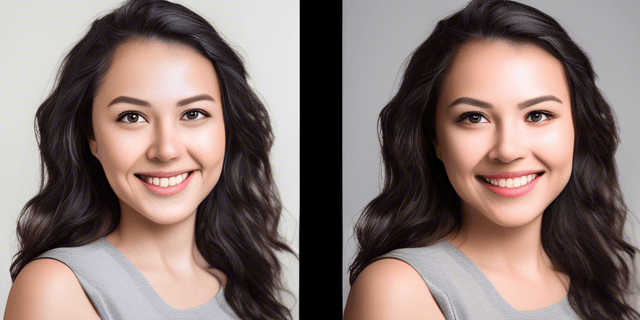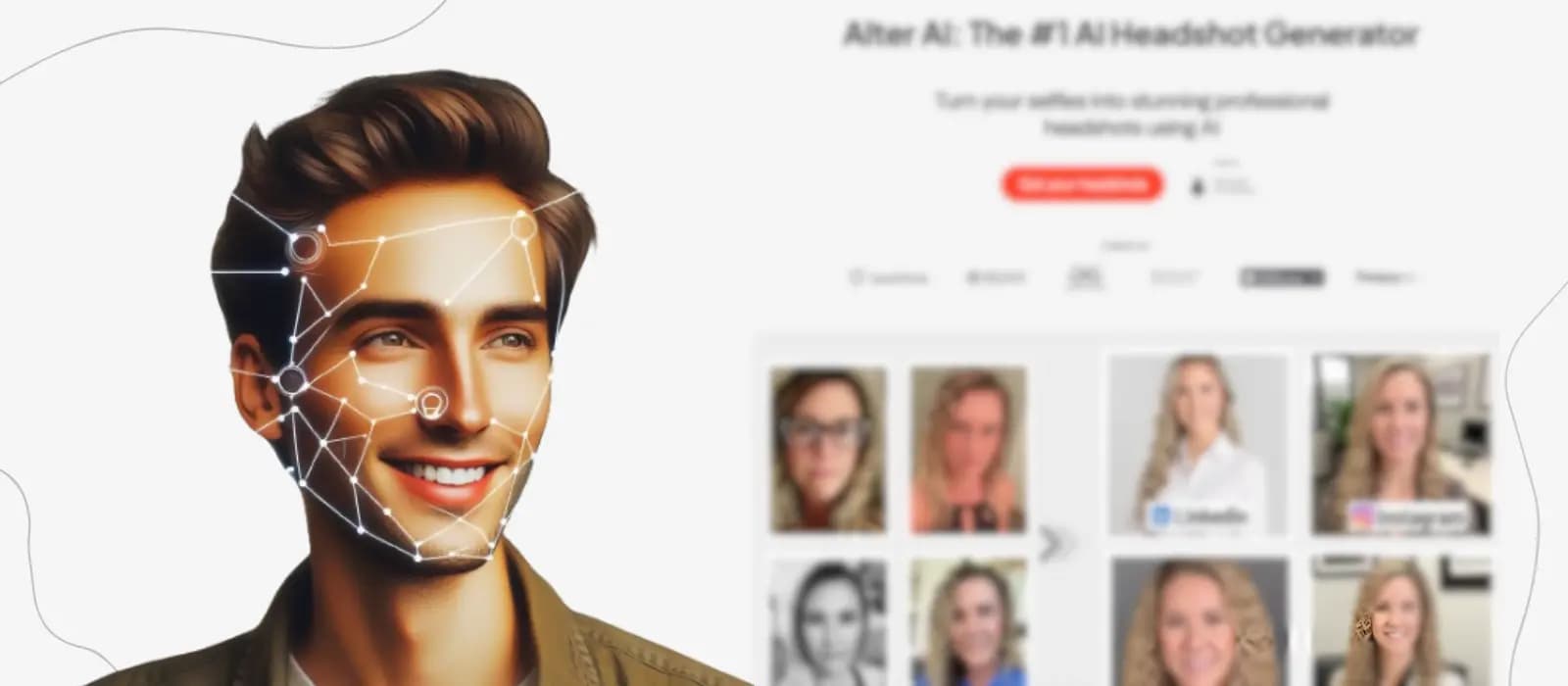Think about scrolling through LinkedIn to find potential collaborators who can help you land a job. Now, while doing this, you saw two profiles on the platform; both have the same years of experience, but one has a profile picture that is well-lit, while the other one has a photo in which they are standing far behind. So, from these two, which one are you going to choose?
Key Highlights:
Headshots are crucial for making a strong first impression on potential employers or collaborators.
Learn to distinguish between good and bad headshots based on composition, lighting, facial expressions, sharpness, background, clothing, posture, eyes, editing, and background blur.
Good headshots feature balanced composition, even/soft lighting, genuine facial expressions, sharp focus on the subject's face, clean background, appropriate clothing, confident posture, focused eyes, tasteful editing, and optimal background blur.
Bad headshots exhibit poor framing, harsh lighting causing shadows and distortion, forced or awkward facial expressions, blurry or out-of-focus images, cluttered or distracting backgrounds, inappropriate clothing, poor posture, out-of-focus or red-eyed eyes, over-edited unnatural appearance, and unnatural background blur.
To ensure high-quality headshots, emphasize proper composition, lighting, facial expressions, sharpness, background, clothing, posture, eyes, editing, and background blur.
The obvious choice is the profile, which has a well-lit picture.
Headshots are the first impression you make on a potential employer, client, or collaborator. So it becomes vital to make each one of them count. But how do you distinguish between a good headshot and a bad one?
Good Headshots vs. Bad Headshots: Head to Head Comparison
Sno | Criteria | Good Headshot | Bad Headshot |
1 | Composition | Subject centered with balanced background. | Poor framing, subject too close to edges or cut off. |
2 | Lighting | Even/soft lighting accentuating facial features. | Harsh, unflattering light causing shadows and distortion. |
3 | Facial Expressions | Genuine, confident expressions. | Forced, awkward, or fake expressions. |
4 | Sharpness | Clear focus on the subject’s face, especially eyes. | Blurry or out-of-focus, lacking clarity. |
5 | Background | Clean and unobtrusive, contrasting with subject. | Cluttered or distracting, blending with subject. |
6 | Clothing | Appropriate for job profile, non-distracting. | Inappropriate or distracting attire. |
7 | Posture | Confident and comfortable, typically sitting. | Poor posture, slouching, or appearing uncomfortable. |
8 | Eyes | In focus, conveying confidence and engagement. | Out of focus, red-eyed, squinting, or lifeless. |
9 | Editing & Color Correction | Tasteful editing, natural color correction. | Over-edited, unnatural appearance and distortions. |
10 | Background Blur | Optimal use of depth of field and bokeh effect. | Unnatural blur, causing distraction or loss of detail. |
Well, fret not; this blog will show you how you can differentiate between a good and a bad headshot. Details you need to check when getting your own headshot so you don't make the mistake of paying up to a photographer and still don't get the best headshots for yourself. Let's begin!!
1. Composition of a Headshot
A good headshot will frame the subject, which is you, in the center of the image. An Experienced photographer knows they need to find a balance between the main subject and the surroundings to get a perfect picture.

On the other hand, in a bad headshot, you will see poor composition, such as a photographer choosing not-so-great framing. For example, if some part of the subject is cut out from the headshot, it could be the top hair or their neck, which is not visible in the frame. Also, a bad composition can be the subject being too close to the edges of the frame, making the frame look zoomed in.
2. Lighting
Without a doubt, lighting can give personality to the subject. So, if you take a photo in low lighting, you might come out to be a more aggressive and hard-to-deal person to viewers. At the same time, if your photographer uses even or soft lighting on you in such a way that it accentuates your facial features, it is termed good lighting. With good lighting, a photographer tries to minimize the harsh shadows, giving the subject an ideal look.

Now, coming to the lousy headshot, have you seen pictures that are harsh on the eyes? Well, those pictures have unflattering lights, shadows need to be muted more, and the features present on the face are uneven and primarily distorted.
3. Facial Expressions
Helping you out with the facial expression is one of the prime responsibilities of a photographer. Expressions can define the nature of the subject; a good headshot will capture a genuine and confident expression on the subject's face. The main goal of capturing a headshot is to give viewers a peek into the personality of a subject. As a result, fake smiles are a big no when it comes to clicking a headshot.

A bad headshot can be seen with forced or awkward expressions, which can puzzle the viewer who is visiting the headshot. In addition to this, a bad facial expression will also make the subject look uncomfortable, fake, and insincere. All of these expressions will do no good when someone is looking at your profile for the very first time. Keep in mind that you don't need to try too hard cause you will end up making faces, and the headshot will not look natural.
4. Sharpness of the Image
Another thing that makes a big difference in headshots is the sharpness or focus of the image. A good headshot's focus is going to be on the face of the subject. In truth, no matter the niche you have in photography, every image has to be sharp, and the subject always needs to be in focus.

A bad headshot is the one where you will find blurry or out-of-focus images. They might look okay, but if you pay close attention to them, you will see that the face of the subject isn't correctly visible, specifically around the eyes.
5. Background
When taking a photo, a photographer needs to make sure that the subject present in the foreground isn't blending with the background. The skin tone and the color of their clothing have to be different from the background in order to strike a contrast between the two. A good headshot will have a clean and unobtrusive background, which also compliments the subject's skin tone while elevating the focus of a viewer solely on the subject.

On the other hand, a bad headshot is going to have a blurry or cluttered background. See if you are someone who is a working professional in a software company or a law firm. In that case, you need to have a soft monotone background. If your background has some graffiti or a wall of bricks that is blurred out. Then, your headshot will look less professional than it is.
6. Subject's Clothing
A good headshot will always have attire that suits the job profile of a subject. There's an old quote that goes like this, "you dress for the job you want, not for the job you have." So, if you are looking for the position of manager, your attire will be business suits in navy blue, black, gray, tan, and dark brown colors.

On the contrary, a bad headshot is the one where you will be wearing something that is distracting or inappropriate for the viewer. For example, you should only wear clothes that have stripes on them, or more logos present on the clothing is also a big no. All of this can make your professional headshot look unprofessional, so steer clear of them.
7. Posture
Proper posture can make you look more confident and approachable in the headshot. For this, photographers usually ask the subject to sit on a comfortable chair in front of a camera. You can go for a standing shot, but it is not recommended because when you are standing, your body is in a balancing act. As a result, one or two nerves will start twitching over time, making you look uncomfortable.

A bad headshot is where you, as a subject, are slouching forward or have to sit in an uncomfortable position. This can lead to a bad posture, which can also affect facial expression and make it look bad.
8. Subject's Eyes
The eyes can speak volumes; in movies, you might have seen how much of a focus is placed on the eyes during intense or emotional scenes. In the same way, when you are going for a headshot, your eyes have to be properly in focus and in a well-lit environment where the light is not hurting the eyes but allowing them to send a message of confidence and engagement. With a proper focus on the eyes, the headshot is able to draw the attention of a viewer towards the subject right away.

A bad headshot will have an out-of-focus eye, or the pairs will have a red-eyed effect, squinting, or they may look completely lifeless. All of this will make the subject look uninterested, doubtful, and less friendly to viewers.
9. Editing & Color Correction
After a photographer takes your headshot, they will ask you to select a few photos so they can polish them for you via editing. A good photographer is always going to take some time with the editing and not just provide you with the headshots right after they are just clicked. For a good headshot, the photographer has to keep editing tastefully where they should be removing blemishes, adjusting the color of the overall image to make it look warm, and others.

Meanwhile, a bad headshot is one where you can see the overuse of brushing, color correction, lighting adjustment, and other features of the editing tool that are optional. The overuse of an editor will make your headshot look distorted and give the subject an unnatural appearance in general. As a result, your headshot will have less credibility, and viewers are going to lose interest in your profile as soon as they see the image.
10. Adding Background Blur
See if your photographer is taking headshots inside their studio, then blurring the background is optional. A good headshot will always show a depth of field or optimal use of a bokeh effect to make the shallow depth of field seem more profound. Furthermore, background blur isn't effective if the background is cluttered, so always get your headshots clicked in front of plain backgrounds. A bad headshot will have an unnatural background blur. It could cause distractions or even make the hair of the subject blurred out to make the headshot unpresentable.
Wrapping Up
So these were some of the pain points on which you need to put extra emphasis to get yourself good headshots. All of these details can be easily seen by a non-professional, so don't stress yourself too much. Just keeping these points in the back of your head will help you get the best results from your headshot session.
We hope that we find the difference between a good and a bad headshot. Comment down any additional points that our readers must know before heading for their headshot session, and help each other out.
Frequently Asked Questions
Why are headshots important for professional profiles?
Headshots are the first impression on potential employers or collaborators, influencing their perception of professionalism and suitability for roles or collaborations.
What are the key differences between good and bad headshots?
Good headshots feature balanced composition, flattering lighting, genuine expressions, sharp focus, clean backgrounds, appropriate attire, confident posture, focused eyes, tasteful editing, and optimal background blur. In contrast, bad headshots exhibit poor framing, harsh lighting, forced expressions, blurry images, cluttered backgrounds, inappropriate clothing, poor posture, unfocused eyes, over-editing, and unnatural blur.
How can I ensure I get a good headshot?
Focus on finding a skilled photographer, communicate your preferences, dress appropriately, practice good posture and facial expressions, and ensure a clean, unobtrusive background for your headshot session.
Why is editing important for headshots?
Editing helps enhance the overall quality of headshots by removing blemishes, adjusting colors, and improving overall appearance, ensuring a polished and professional final image.
What should I avoid when getting my headshots taken?
Avoid poor composition, harsh lighting, forced expressions, blurry images, cluttered backgrounds, inappropriate attire, slouching posture, unfocused eyes, over-editing, and unnatural background blur to ensure high-quality headshots.





